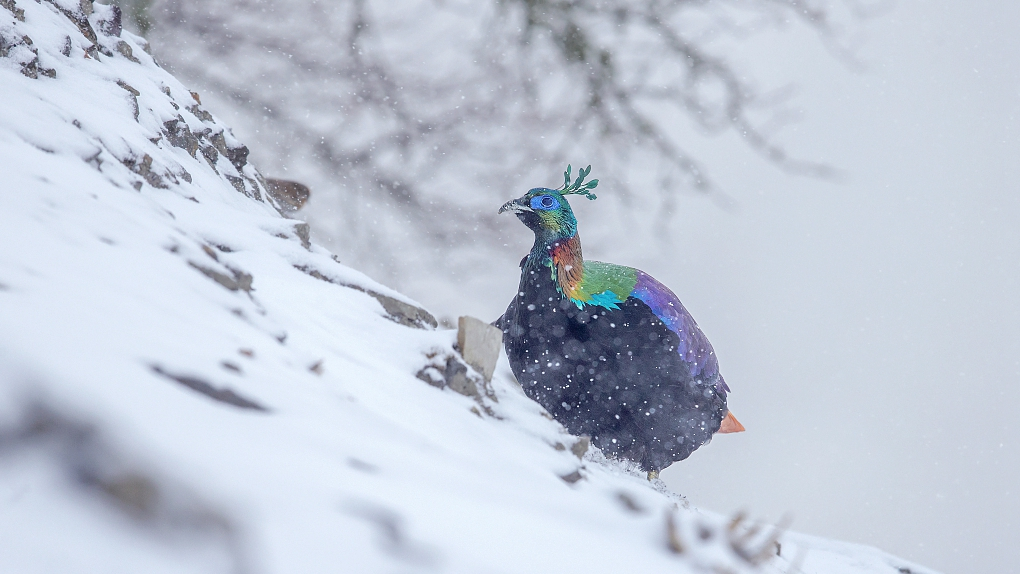

China's giant panda research base said that it had bred 12 Chinese monals, a pheasant species as rare as the giant panda, after nearly two years of rescuing conservation.
In 2017, there were only 11 captive Chinese monals in Fengtongzhai National Nature Reserve in southwest China's Sichuan Province.
The reserve, together with Chengdu Research Base of Giant Panda Breeding and China West Normal University, set up a lab in 2017 to pass on experience in panda breeding to the protection of birds.
A total of 12 Chinese monals have been bred since the conservation work began, almost doubling the number of artificially-bred Chinese monals.
The newly-born seven birds this year lifted the number of hatched individuals and the hatching rate by 40 percent and 15 percent respectively from the previous year, laying a solid foundation for stable population growth.
The giant panda base said in the future researchers would focus on the protection of genetic diversity, scientific breeding and hatching, and disease prevention and control, aiming to establish a self-sustaining population of rare Chinese monals.
With a highly iridescent plumage, the Chinese monal is one of the largest pheasants in the world. The species is listed as "vulnerable" on the International Union for Conservation of Nature Red (IUCN) List of Threatened Species and is under China's top national protection.
There are less than 3,000 wild Chinese monals in the world, which mainly live in mountainous areas in southwest China.
(Cover image: A Himalayan monal which belongs to the pheasant family like the Chinese monal. The male Chinese monal's tail is green and the male Himalayan monal's tail feathers are uniformly rufous. Luckily, the Himalayan monal is listed as a "least concern" species on the IUCN Red List.)
(If you want to contribute and have specific expertise, please contact us at nature@cgtn.com.)

Copyright © 2018 CGTN. Beijing ICP prepared NO.16065310-3
Copyright © 2018 CGTN. Beijing ICP prepared NO.16065310-3